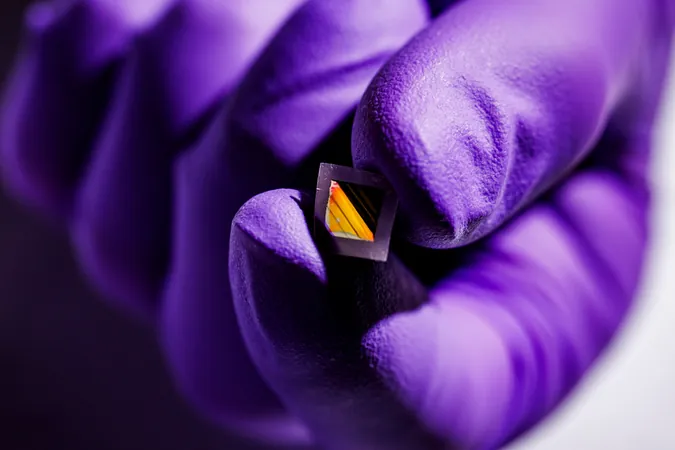
MIT Unveils Revolutionary 10 nm Infrared Sensor: A Game Changer in Heat Detection!
2025-04-27
Author: Jia
Breakthrough Innovation in Far-Infrared Sensing
Hold onto your hats! MIT researchers have just unveiled a groundbreaking ultrathin device that is set to transform the world of far-infrared sensing. Detailed in the prestigious journal *Nature*, this marvel measures a complete far-infrared spectrum and detects minuscule heat changes—all while being just a staggering 10 nanometers thick! Imagine the possibilities: this compact technology can pave the way for lightweight, portable applications, such as sleek, high-tech eyeglasses.
The Secret Behind the Sensation: A New Technique
Leading the charge are MIT scientists including Celesta S. Chang and Jeehwan Kim, who have introduced an innovative technique called "release-layer-free atomic lift-off (ALO)." Their research revealed a fascinating insight: within the PMN-PT structure, lead (Pb) weakens the covalent bonds at the interface, making it easier to exfoliate high-quality, single-crystalline membranes down to an astonishing 10 nm thickness without traditional sacrificial layers. This state-of-the-art method has achieved an unparalleled pyroelectric coefficient of 1.76 × 10⁻² C m⁻² K⁻¹—making it a true heavyweight in the sensor world!
How It Works: A Closer Look at the Membrane
The magic begins with the carefully chosen PMN-PT pyroelectric membrane, which is adept at converting tiny temperature fluctuations into electric signals—perfect for sensing heat precisely. And the best part? Being only 10 nanometers thick, it has an incredibly low thermal mass, allowing it to function without bulky refrigeration systems typically used in far-infrared technology. This means it operates efficiently at room temperature, cutting down on power consumption and the need for heavy, complex cooling apparatus.
Next-Level Manufacturing: Remote Epitaxy Without Limits
Creating such an incredibly thin and flawless film required innovative manufacturing methods. While the conventional approach of remote epitaxy often utilizes an intermediary graphene layer, the MIT team broke the mold by seamlessly growing PMN-PT directly on a single-crystalline substrate. They then applied their Atomic Lift-Off technique to peel it off in one piece—no intermediate layer required! This genius approach not only keeps the substrate intact for future use but also results in a pristine, free-standing membrane that maintains its crystalline structure.
A Bright Future: Funding and Implications
This research was made possible by funding from the U.S. Air Force Office of Scientific Research, indicating the potential military applications of this technology. As the world races toward innovation, this 10 nm infrared sensor could be at the forefront of advancements in thermal detection and sensor technology, ushering in new user-friendly gadgets that could change how we perceive heat and temperature.
 Brasil (PT)
Brasil (PT)
 Canada (EN)
Canada (EN)
 Chile (ES)
Chile (ES)
 Česko (CS)
Česko (CS)
 대한민국 (KO)
대한민국 (KO)
 España (ES)
España (ES)
 France (FR)
France (FR)
 Hong Kong (EN)
Hong Kong (EN)
 Italia (IT)
Italia (IT)
 日本 (JA)
日本 (JA)
 Magyarország (HU)
Magyarország (HU)
 Norge (NO)
Norge (NO)
 Polska (PL)
Polska (PL)
 Schweiz (DE)
Schweiz (DE)
 Singapore (EN)
Singapore (EN)
 Sverige (SV)
Sverige (SV)
 Suomi (FI)
Suomi (FI)
 Türkiye (TR)
Türkiye (TR)
 الإمارات العربية المتحدة (AR)
الإمارات العربية المتحدة (AR)